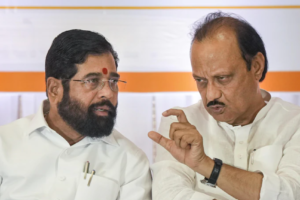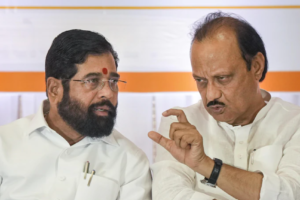The Roar of the Weekend Unpacking the Enduring Appeal of Friday Night Cars

Chennai, India – July 29, 2025 – As the week draws to a close, a distinct hum begins to resonate in parking lots, designated strips, and even on the streets of cities and towns worldwide. It’s the sound of engines revving, tires squealing (sometimes), and conversations buzzing – it’s the phenomenon of “Friday Night Cars.” More than just a gathering of automobiles, these weekly rituals represent a vibrant subculture, a testament to the enduring human fascination with the internal combustion engine, and a powerful social outlet for enthusiasts of all ages and backgrounds.
A Timeless Tradition From Cruising to Car Meets
The roots of Friday Night Cars stretch back decades, long before the advent of social media and dedicated car show apps. In the 1950s and 60s, particularly in post-war America, cruising became a quintessential teenage pastime. Young people, especially boys, would pile into their hot rods, muscle cars, or even just their family sedans, and drive aimlessly along a designated “strip” or main street. This wasn’t just about showing off vehicles; it was a social ritual, a way to see and be seen, to meet friends, flirt, and assert a sense of freedom and identity. Iconic films like “American Graffiti” immortalized this era, capturing the spirit of youthful rebellion and automotive passion that defined a generation.
As the decades progressed, cruising evolved into more organized “car meets.” While the spontaneous nature of cruising still exists, many Friday night gatherings now take place in pre-determined locations – large parking lots, specific sections of industrial parks, or even designated public spaces like Poole Quay in the UK, which hosts themed car nights every Friday in July and August. These events cater to a wide array of automotive tastes, from classic muscle cars and vintage hot rods to modern sports cars, modified imports, and meticulously restored antiques.
More Than Just Metal The Social Fabric of Car Culture
At its heart, Friday Night Cars is a deeply social phenomenon. It provides a unique platform for individuals to connect over a shared passion, transcending age, occupation, and socio-economic divides. The gleam of polished chrome, the rumble of a V8, or the intricate details of a custom paint job become instant conversation starters.
- Community Building: Car meets are fertile ground for building communities. Whether it’s a dedicated club for a specific marque (like classic Mini owners or Ferrari enthusiasts) or a melting pot of diverse vehicles, these gatherings foster a sense of belonging. Friendships are forged, knowledge is exchanged, and a strong camaraderie develops among like-minded individuals.
- Knowledge Sharing and Learning: For many, car meets are an invaluable educational experience. Enthusiasts eagerly share tips on maintenance, modification, restoration, and even where to find rare parts. Experienced mechanics might offer impromptu advice, and novices can learn from the collective wisdom of the community. This collaborative learning environment elevates the hobby beyond mere ownership.
- Showcasing Passion and Craftsmanship: For car owners, Friday nights are a chance to proudly display their prized possessions. Hours of meticulous cleaning, wrenching, and customizing culminate in these moments of admiration and appreciation from fellow enthusiasts. It’s a testament to personal dedication and a celebration of automotive artistry.
- Networking and Connection: Beyond the immediate car community, these events can also lead to broader networking opportunities. Individuals from different professions and backgrounds interact, sometimes sparking new business ventures or personal connections.
- Breaking Stereotypes: While car culture might sometimes be stereotyped as a male-dominated or youth-centric pursuit, Friday Night Cars often defies these notions. Many events feature a diverse mix of genders, ages, and demographics, breaking down barriers and fostering an inclusive environment for all who share a love for automobiles.
The Economic Engine Under the Hood
While often seen as informal gatherings, Friday Night Cars and the broader car show culture have a tangible economic impact, both locally and within the wider automotive industry.
- Local Business Boost: Designated car meet locations, whether a specific diner parking lot (like the iconic Bob’s Big Boy in Burbank, California) or a commercial district, often see a significant boost in business on Friday nights. Food vendors, coffee shops, and nearby restaurants benefit from the influx of attendees. Gas stations, car washes, and auto parts stores also see increased activity leading up to these events.
- Aftermarket and Customization Industry: The desire to showcase a unique vehicle drives a substantial market for aftermarket parts, accessories, and customization services. From performance upgrades and specialized paint jobs to custom interiors and intricate audio systems, car enthusiasts invest heavily in personalizing their vehicles. This directly supports a vast network of small businesses, skilled technicians, and manufacturers.
- Automotive Tourism and Events: Larger, more organized car events, often building on the Friday night tradition, draw visitors from far and wide. Events like “Graffiti Summer” in Modesto, California, or the “Back to the Bricks” in Flint, Michigan, attract thousands of attendees, generating significant revenue for local hospitality sectors, including hotels, restaurants, and retail.
- Brand Exposure and Sales for Manufacturers: While less direct than a traditional auto show, informal car meets still offer opportunities for automotive brands to gauge public interest, observe trends in customization, and even indirectly influence purchasing decisions. The “cool factor” associated with certain models at these gatherings can translate into increased demand.
Safety, Responsibility, and the Future
As the popularity of Friday Night Cars continues, so too does the need for responsible participation and effective management. While the majority of these gatherings are peaceful and celebratory, isolated incidents of street racing, excessive noise, or disregard for public safety can unfortunately occur.
Event organizers and local authorities increasingly work together to ensure safety. This includes:
- Designated Areas: Encouraging meets in controlled environments like large, private parking lots or specially designated public spaces, away from residential areas.
- Traffic Management: Implementing clear entry and exit points, traffic flow directions, and sufficient parking to prevent congestion.
- Rules and Guidelines: Communicating clear rules of conduct, including speed limits, noise restrictions, and prohibitions on dangerous maneuvers like burnouts or racing.
- Community Engagement: Fostering a positive relationship between enthusiasts, law enforcement, and local residents through open communication and mutual respect.
The future of Friday Night Cars remains bright, adapting to evolving automotive technologies and environmental concerns. While classic cars will undoubtedly continue to hold a special place, electric vehicles (EVs) are slowly but surely making their way into the scene, bringing new opportunities for customization and performance discussions. The essence, however, will remain the same: a weekly gathering where passion for automobiles ignites conversations, fosters friendships, and provides a unique backdrop to kick off the weekend.
From the quiet corners of small towns to the bustling streets of major metropolises, the tradition of Friday Night Cars continues to thrive, a testament to the powerful, enduring connection between humans and their machines. It’s a culture built on shared enthusiasm, mechanical marvels, and the simple joy of gathering with like-minded souls to celebrate the art of the automobile.


 English
English Hindi
Hindi Kannada
Kannada Malayalam
Malayalam Tamil
Tamil Telugu
Telugu










